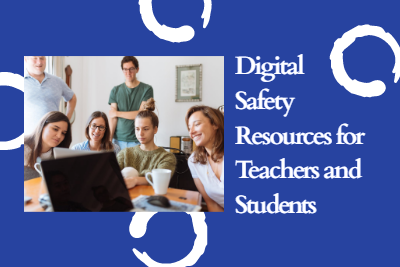Digital Safety Resources for Teachers and Students
Quarantined! The whole world is operating on Digital platforms from home. Whether they are classroom studies either in schools, colleges, or offices. Each individual is following their work based on their internet. Under such compulsions, Digital safety or e-safety safeguards must be keenly understood and observed.
The best way to help students is by identifying the lurking dangers on the internet like cyberbullying. A teacher needs to teach them how to identify, resist, and stop it. With studies to games to technological pursuits, everything is balanced precariously on the internet and WiFi connections at home, and a little unsafety can tilt the balance. Therefore, understanding the e-safety is not only essential but also tricky with young children.
On the one side, you have to teach interest in games and learning courses available on the internet. And at the same time, explain the potential threat of cyberbullies or crimes that can lurk in their life without the knowledge of parents or teachers when they download information by themselves.
Four Known Curriculums Safeguarding Children from Cyber Crime Are
– Community Support and Integration: Have a compiled group of people. They include messages that can come from parents or teachers or adult supporters. Here, there is ongoing communication through the integration of news, views, and measures to curb the potential cyber threat.
Several apps have been introduced to secure cyber threats of children in schools, colleges, and homes. The national curriculum teaches students how to protect online identity and report concerns.
-Use of Storytelling: The importance of storytelling is in acquainting students with real-life situations and asking them to talk about and explain what has been understood. Under it, comes specific programs like:
Safer Internet Day – An initiative followed in February each year, aims to raise awareness of online issues on cybercrime. They conduct a nationwide conversation in story format to overcome threats from any other country in the world.
Also, an attempt in schools is made to follow Personal Health and Social Education classes, where children interact with teachers or trusted seniors to share e-crime concerns and find out measures to curb them. It has proved to be a very beneficial program so far.
-Strategies for confidence-building – To teach children how to say ‘No’ to unnecessary peer pressure for playing an inappropriate game is also made aware among children in schools and colleges through teachers and safe adults.
In support of the endeavour, several programs have been strategized and developed in schools and colleges. One among them that is hugely popular among children nationally and internationally is the e-safety SMART rule program that uses cartoon illustrations to teach children how to reach safe online decisions with the help of lessons and cartoon strips.
-Teaching Approach & Beyond: “Dos and Don’ts”
The world seems to be drugged on digital technology every minute. And the fantastic lust for connecting, creating, learning, and growing should never be discouraged. However, the crime that exists in the digital world cannot be stopped by knowing the simple do’s and don’ts, where children from time to time seek assignment help on the same. They still hold relevance for children in the initial years. Here again, in teaching, the idea is not to avoid the subject or block the technological knowledge or create an atmosphere of fear.
With the use of technology also comes a responsibility. And that is to put digital citizenship education as an agenda. The most natural way they are taught here is through apps that have cartoon networks and more.
Some of the hottest favourites programs among children are:
- The Adventures of Kara, Winston and the SMART Crew
- Digiduck’s Big Decision
- Smartie the Penguin
- CBBC Stay Safe
- Common Sense Media
All these programs and initiatives are efforts to come under the umbrella and the importance of digital citizenship.
Digital Citizenship And Its Importance?
This term has evolved to be well used in everyday discussion in recent years. Digital citizens are those who are digital online learners. To make use of technology-driven power with empathy and responsibility to learn, create, and participate and let the world be a better place is their motto. They work in:
-Digital Agent
-Digital Interactor
-Digital Self
Digital citizenship is outstanding, why? As much as one exists in the real world, there is also a virtual world — the Cyberworld, where even children and students need to be safe, secure, literate, and happy as in the online world. Here too, children who are of the impressionist age. They need guidance and learning from tutored adults so that they can navigate digital dilemmas as safely as in the real world.
Conclusion:
As technology, today is being used differently. It has become more immersive. Many essential concepts need to be looked into as changes are made virtually every day. They need to be explored. In the digital citizenship resources topics like media and well being, the privacy that needs to be maintained for security purposes. The importance of digital footprint, how to check against bullying, and digital drama like hate speech is given importance. One learns as one understands and listens!

